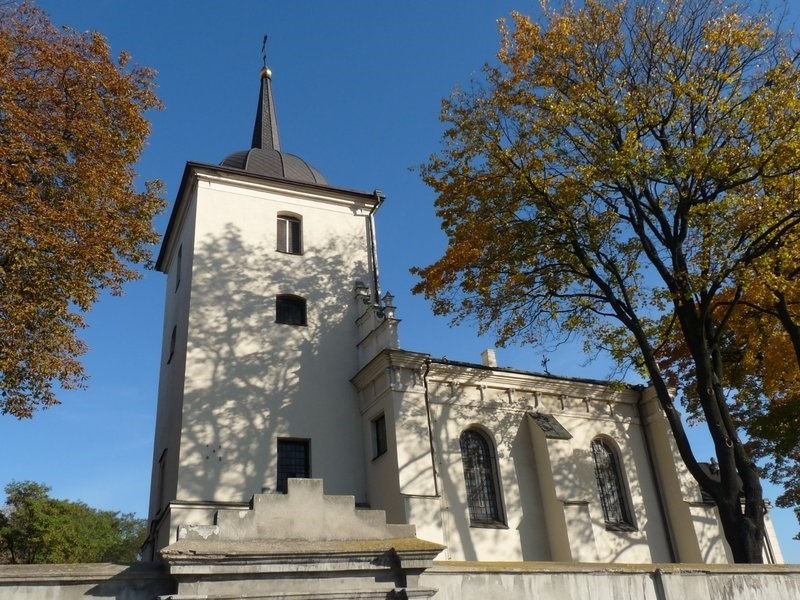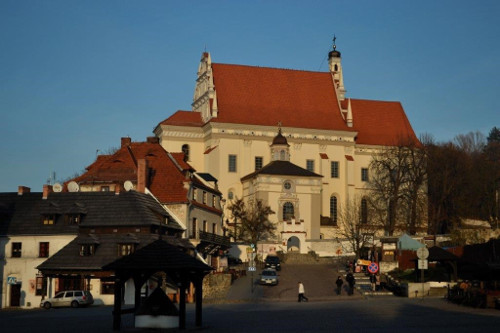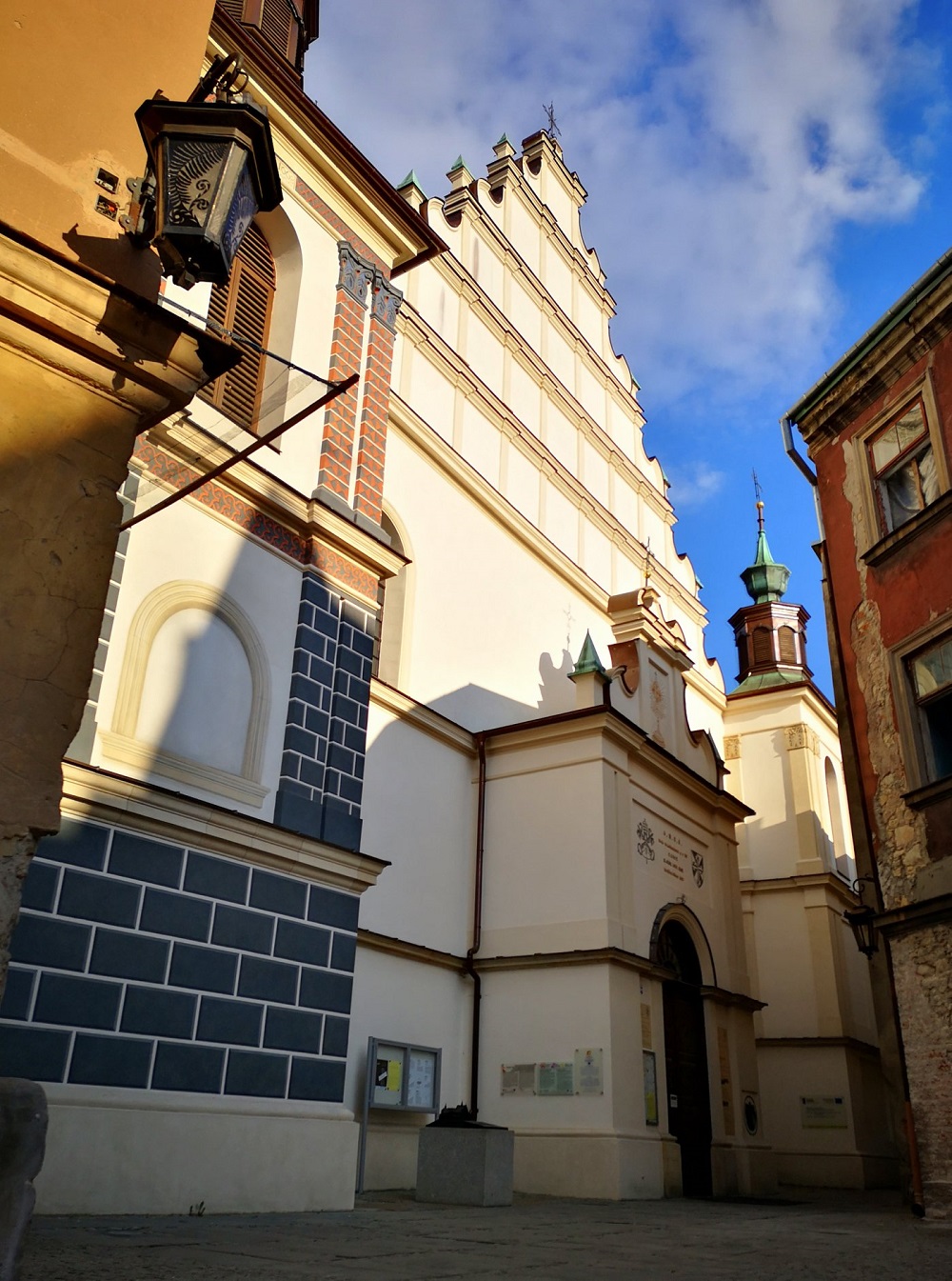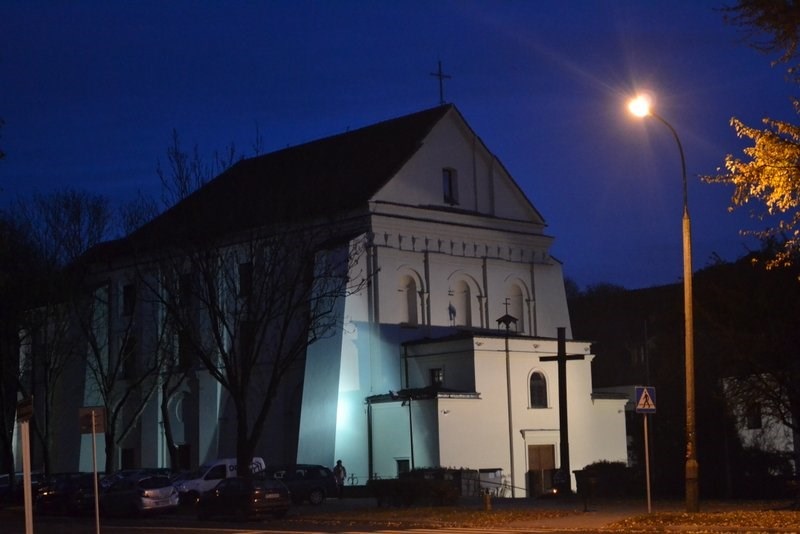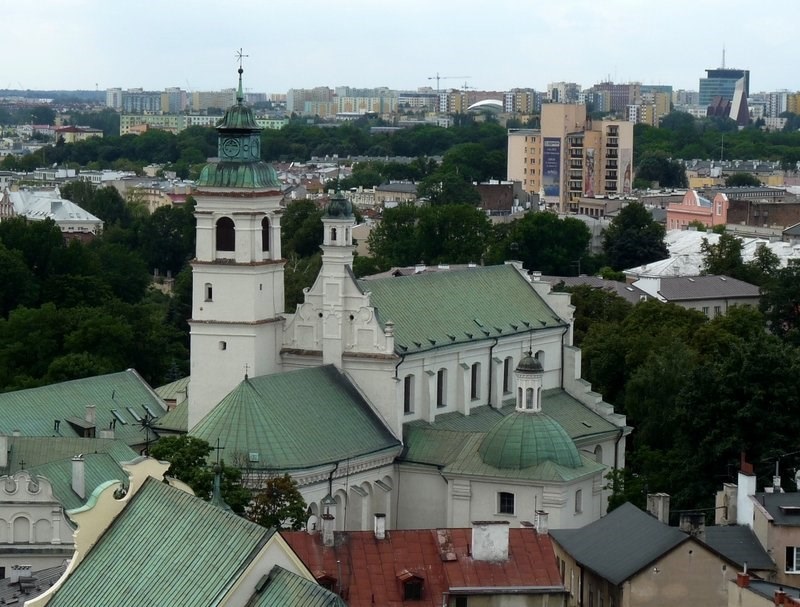Szlak Renesansu Lubelskiego

Built in the years 1607-1633 in Ruska Street between the Staromiejskie and Czwartek Hills, the temple is an example of a multi-religious character of Lublin. In 1638 King Ladislaus IV Vasa subordinated the Orthodox church to the Bishop of Chełm Metody Terlecki, who seated Basilian monks there, supporters of the Union of Brest. ...

The collegiate church was built in the years 1587 – 1598, according to the project by an Italian architect, Bernardo Morando. It was endowed by the city founder, the Great Chancellor of the Crown, Jan Zamoysky. ...

Next to Lublin, Kazimierz Dolny was the second most influential centre of the Lublin Renaissance. This new architectural style was first introduced during the rebuilding of a Gothic parish church in Kazimierz which was destroyed by fire. The new temple was designed by Jakub Balin, a Lublin architect of Italian origin, and erected in the years 1610–1613. ...

One of the most important monuments of Lublin is the church and monastery of the Dominican Order. The Dominicans arrived in Lublin in the 1230s. In 1342, after the Tatar invasion, King Casimir the Great ordered building a Gothic,single-nave, brick church in place of the previous, wooden one. It was named as the church of St. Stanislaus Bishop and Martyr. ...

The brick church at the Lviv Route was built in the years 1635–1649 in place of the wooden temple of St. Lawrence. ...

The present-day church was built at the beginning of the 17th century and endowed by Mikołaj Czyżowski, the standard-bearer of the Chełm Land. Initially, there was a wooden temple, dating back to the end of the 15th century, which was frequently destroyed by numerous fires and warfare and then renovated, obtaining its final shape in the first half of the 20th century. ...

The first documented information about the parish in Kurów comes from the mid-15th century. The church was founded by the Lublin castellan Piotr Kurowski at the turn of the 17th century. Originally a Calvinist church, it became a Roman Catholic temple in the second half of the 17th century. ...

The brick church was built in the years 1635–1653 on the site of a wooden church founded by Jakub Koniński. This one-nave church has typical features of the Lublin Renaissance – a decorative triangular gable with pinnacles, a barrel vault with lunettes and rich stucco ornaments, which were presumably made by the mason Jan Wolff, one of the most renowned stucco artists. Destroyed during the Swedish invasion, the church was reconstructed and consecrated in 1745. ...

The brick church was built on the initiative of the governor of Stężyca, Stanisław Taryło, at the turn of XV and XVI century. It was rebuilt after the fires in 1638 and 1757 and obtained its present shape by the end of the XVIII century. ...

The church and the cloister was build for the Bernardine Order between 1473 and 1495 from the funds of Lublin townspeople. The reconstruction by Rudolf Negroni and Jakub Balin in the first half of XVII century had a direct impact on shaping the Lublin Renaissance style. The church became an exemplar for other temples erected in the Lublin Region. ...
Page 1 of 5




